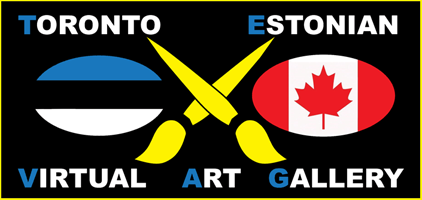Helmi Herman was born in southern Estonia in 1916 into a family with seven siblings. She began her art studies in Tallinn during the World War II and was later accepted into the Düsseldorf Academy of Art in Germany. According to her professors she was an extremely talented student. In 1951 she graduated with such notables as Joseph Beuys, who was to become one of the world’s most important conceptual artists.
Shortly after graduation Herman immigrated to Brazil where she had two brothers and in 1955 she moved to Toronto to be close to her sisters. She lived in Toronto between 1955 and 1960 and exhibited actively with the Society of Estonian Artists and later with the Colour and Form Society. In 1960 she went to live in New York to be closer to the international art scene and she lived there for 18 years. In New York Herman began to do ceramics and sculpture in addition to oil painting and the watercolour medium which was her favourite. In 1978 she returned to Toronto where she lived until her death in 1994.
During the early period in Toronto her interest was in a Cubist related modernist style which she often combined with figural designs of her Düsseldorf time. She worked in both watercolour and oil media and was considered one of the best Estonian-Canadian artists by critic Richard Antik. In New York, after a brief depressive figural style, she experimented with surrealism and finally advanced into abstraction during the second half of the 1960’s. In about 1965-67 she injured her leg in a subway accident, underwent several operations and had to stay at home to recuperate. It was during this period that she completed a series of flowers in watercolour painted on hand-made Japanese rice paper and began carving sculpture.
Helmi Herman exhibited widely in Germany, Copenhagen and France during her student years in Düsseldorf. She had exhibitions in Brazil, Toronto, New York and Chicago, and she always participated in Estonian exhibitions in the United States and Canada.

